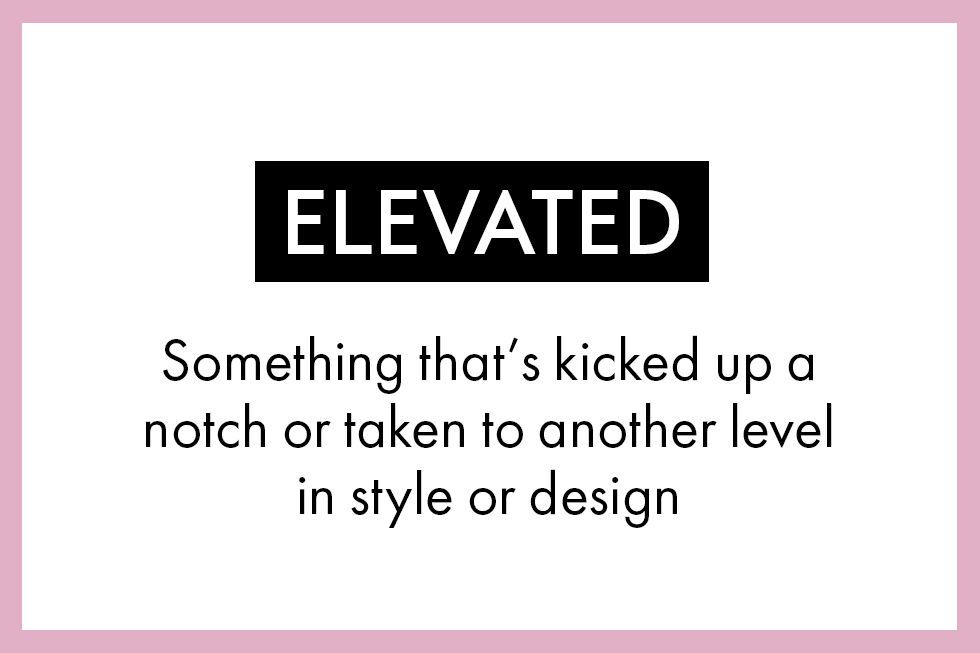Table Of Content

The term ‘interior design’ is only a century old, but this work has been around since ancient times. Both the structure and interior design of its buildings have undergone numerous alterations and remodelings. For an architect to focus on interior design was “unbelievably innovative” in those days, explains Andy Cohen, co-CEO of Gensler. These groups often work on multiple fronts, helping create better vegan options in cafeterias, animal-free interior design or cleaning products, and lunch and learn events. Should you wish to pursue an undergraduate degree or even a masters degree in interior design, you will find accredited educational institutions to train you for the career. Professional bodies like the British Insititute of Interior Designers (BIID) set strict criteria for their membership, to protect the public from malpractice, but you don’t need to be a member of the BIID to practise interior design.
How to Get an Interior Design License - Architectural Digest
How to Get an Interior Design License.
Posted: Thu, 30 May 2019 07:00:00 GMT [source]
Prominent Interior Design Styles

This final touch composes the face of the project, transmitting the designer's vision as well as the desires and needs of the users. Influenced by the styles of 18th and 19th Century European homes, traditional interior design is still a popular choice today. In contrast to more modern designs, traditionally-styled homes provide a reassuring, timeless backdrop to family living that is both stylish and well put together without being cluttered or overly decorative. Neutral colour schemes, landscape paintings to decorate the walls, and carved-wood furniture are popular in traditionally-designed homes or buildings. Generally when discussing minimalist homes, people imagine clutter-free rooms with white walls and a lack of any unnecessary furnishing or decor.
Media popularization
Secondhand and vintage pieces are typically found in bohemian homes, as are floor pillows, vibrant rugs, ambient lighting, and every kind of hanging plant. The essence of interior design lies in its ability to transform spaces into meaningful, functional, and inspiring environments. It encompasses understanding human behavior, catering to individual needs, and creating spaces that enhance well-being and quality of life.
Modernization of Interior Designing
India has gone through many invasions but never lost its heritage and culture. The Indus Valley civilization was the most modern and well-planned civilization the world had ever seen. Perfectly built houses with accurate geometry and traces of handcrafted decorative arts are found here.
Interior design jobs, salaries & careers
However, as Bascom notes, “It’s definitely harder to design from that perspective.” Of course, when done correctly, this also means the finished look is that much more impressive. Think Interior provides you with the highest standards of education in interior design to enhance your ability of creating ideas. Her onstage style and costumes—couture garb from Paris—made her an influential tastemaker among spectators in her audience, leading her to become known as the best-dressed woman in the world. Her first foray into interior design was a total eschewing of the dark and brooding Victorian décor in the home she and Marbury shared. After she successfully restyled their residence by decluttering, simplifying, and minimizing its heavily ornamented interior, she became the first interior decorator to be given a design commission.
Traditional Interior Design: Everything You Need to Know About This Classic and Timeless Style
A team of people under an experienced person works to achieve a common goal. An interior design team is concerned about the place’s livability, beautification, functionality, and persona. In this comprehensive interior design guide, we have covered all aspects of this field. It includes the definition of interior design, its benefits, history, importance, design styles, principles, interesting facts, cost, and much more. Regardless of the price bracket, a key element of a designer’s job is to know materials well, know what they may be used for and specify them accordingly.
Short History of Interior Design in India
Although it may seem alien to architecture, ergonomics is the discipline that helps us design spaces and devices to be well adapted to the physiological, anatomical, and even psychological characteristics of the inhabitants and users of each room. It constitutes the relationship between the artificial environment and the actions and behaviors of the human body and mind. Therefore, the level of success of good interior design is closely related to detailed ergonomic analysis, an analysis which must start from the study of the dimensions and proportions of the human body in its immense variety. There are anthropometric investigations that group the population according to these parameters, allowing us to provide flexible and effective solutions for the greatest number of potential users.
It is about understanding how people interact with their surroundings and designing spaces that support their activities and well-being. Whether it’s a home, an office, a retail store, or any other environment, interior design plays a critical part in shaping the atmosphere and ambiance of the space. According to Ghia, a traditional interior can also reference something that feels timeless with no expiration date. In this way, it can be similar to transitional interiors; however, traditional ones tend to make more use of classic design. Long heralded as the Coco Chanel of the decorating world, Dorthy Draper’s designs were fearlessly vibrant, sumptuous, joyful, and full of personality. The rooms she designed had either a restrained color palette of classic black and white, while others highlighted oversized graphic patterns and her punchy Technicolor combinations of pinks and greens, turquoise, and citrus hues.
Close Space
Rustic decor provides the perfect combination of comforting, fuss-free design and practical, functional decor, put together to create a warm rustic interior. Natural materials work as the foundation and starting point for creating enviable rustic home decor celebrating the authentic beauty of natural materials to create a cozy, beautiful space. After The Dark Ages, Europeans were once again inspired to introduce color and decorative ornamentation into their homes. During the 12th century, darkly romantic Gothic style was created to make the best use of natural light and freshly popular open interiors. As far back as ancient India, architects used to double as interior designers to fully develop their complete vision.
One of the primary purposes of interior design is to improve the quality of life. A well-designed space can profoundly impact our emotions, behavior, and well-being. Depending on the desired atmosphere, it can evoke feelings of joy, tranquility, or energy. Interior designers carefully consider lighting, color psychology, spatial layout, and ergonomic principles to create spaces that promote comfort, productivity, and a sense of belonging.
By incorporating these cherished items into the design scheme, individuals can showcase their interests, hobbies, and memories, creating a space that truly reflects their identity. For example, displaying a collection of vintage cameras on a shelf or hanging artwork created by a family member can tell a story about one’s passion for photography or artistic background. A multi-functional space is an area that serves multiple purposes or accommodates various activities within a single setting. It involves thoughtful planning and strategic design to optimize the available space and create an environment that seamlessly transitions between different functions. Whether it’s a small apartment, an office, or a commercial setting, incorporating multi-functional elements allows for better space utilization and enhances the overall user experience. Interior design is much more than just arranging furniture and selecting colors.
It’s for that reason that Ramsey’s parents’ house may look different today than it did 40 years ago, but in both iterations it was contemporary. According to Sander, today when someone talks about contemporary style, they’re often referring to an aesthetic that bridges the gap between modern and minimalist, with a more neutral color palette that highlights the architecture of a space. A contemporary living room, for example, “might have fewer pieces in the room, but each of them have a more artistic or artisanal quality and high level of craftsmanship to them,” Sander says. “Frequently the pieces in the room would have quite a mix of textures to them.” Carved wood, mixed metals, and soft fabrics often come together in relatively neutral tones, with occasional bold color infused in pops from artworks, rugs, or blankets.

No comments:
Post a Comment